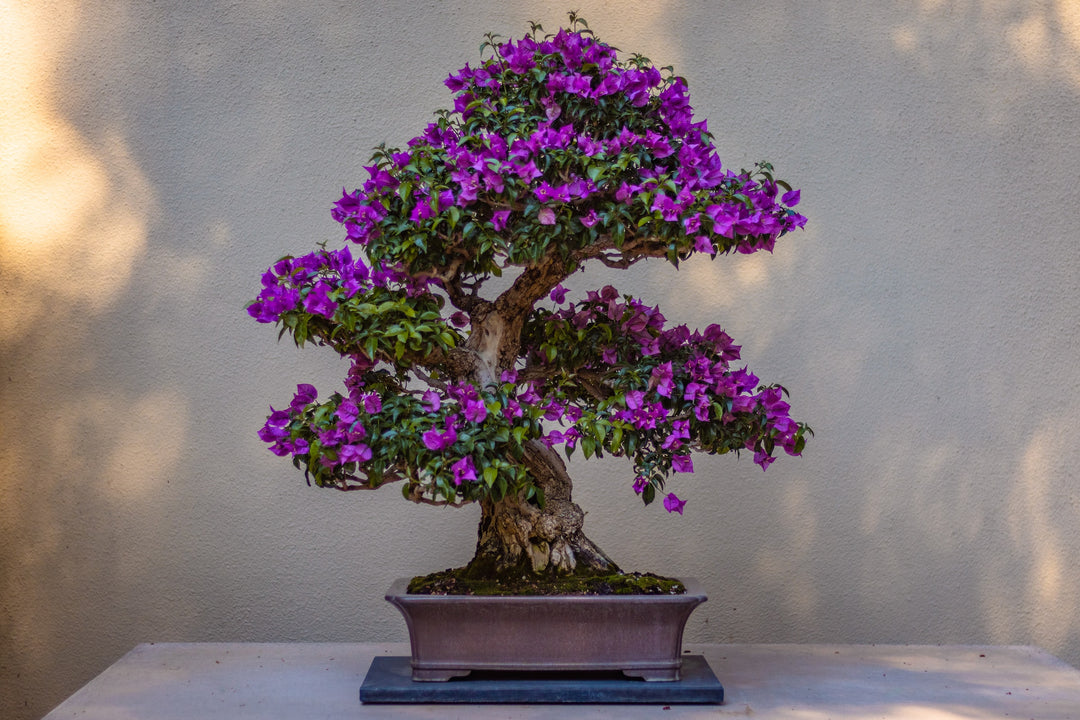
The Art of Bonsai: Unlocking the Timeless Beauty and Serenity of Miniature Trees
Step into the enchanting world of bonsai, where nature meets artistry to create miniature wonders that embody timeless beauty and serenity. The art of bonsai goes beyond just cultivating miniaturized trees; it is a profound expression of harmony, balance, and the passage of time. In this article, we will delve into the captivating realm of bonsai, exploring the intricacies of nurturing these living sculptures and understanding the profound symbolism they hold.
Every twist of a branch, every formation of delicate foliage, and every carefully cultivated root tells a story of patience, dedication, and reverence for nature. Whether you are a seasoned bonsai enthusiast or a newcomer captivated by their mystique, there is always something new to discover in the world of bonsai. Join us as we uncover the secrets to unlocking the allure of these timeless treasures and learn how the art of bonsai can bring a touch of tranquility and harmony to your life.
The history and origins of bonsai
As bonsai became more widely recognized, it transcended its origins as a symbol of prestige and became a beloved art form accessible to people from all walks of life. Today, the art of bonsai continues to captivate enthusiasts around the world, offering a timeless connection to nature and a profound appreciation for the passage of time.
The origins of bonsai are steeped in centuries of tradition, with each miniature tree carrying a rich lineage that speaks to the enduring legacy of this ancient art form. Understanding the history of bonsai provides a deeper appreciation for the cultural significance and timeless appeal of these miniature living sculptures.
The symbolism and significance of bonsai
Bonsai trees are imbued with profound symbolism, representing a harmonious balance between the forces of nature and the artistic expression of humanity. The miniature scale of bonsai trees serves as a reminder of the vastness and interconnectedness of the natural world, encapsulating the essence of a full-grown tree within a diminutive form. Each carefully pruned branch and meticulously shaped trunk reflects the enduring spirit of resilience and adaptability.
In many cultures, bonsai is revered as a symbol of longevity, wisdom, and tranquility. The careful cultivation and nurturing of bonsai trees mirror the virtues of patience, perseverance, and the ability to find beauty in simplicity. Bonsai trees are often associated with spiritual enlightenment and the pursuit of inner peace, serving as a tangible representation of the delicate balance between the ephemeral and the eternal.
The significance of bonsai extends beyond its aesthetic appeal, serving as a profound reflection of our relationship with the natural world and our capacity for introspection and mindfulness. By understanding the symbolism and significance of bonsai, we can gain a deeper insight into the universal truths and timeless wisdom encapsulated within these miniature marvels.
The art and technique of bonsai cultivation
The art of bonsai cultivation is a delicate dance between horticulture and artistic expression, requiring a deep understanding of tree physiology, design principles, and the enduring patience necessary to shape living sculptures over time. The process of cultivating bonsai involves meticulous pruning, wiring, and shaping to create harmonious compositions that evoke the essence of mature trees while maintaining their diminutive scale.
Central to the art of bonsai cultivation is the concept of "wabi-sabi," embracing imperfection and transience as inherent elements of beauty. Bonsai artists strive to evoke the spirit of nature within their creations, capturing the ebb and flow of seasons, the weathered character of ancient trees, and the resilience of life in miniature form. Through careful observation and thoughtful intervention, bonsai artists coax their trees to embody the essence of natural landscapes in a confined space.
The technique of bonsai cultivation encompasses a wide array of horticultural skills, from soil composition and watering practices to understanding the unique growth habits of different tree species. Each step in the cultivation process is a testament to the artistry and dedication of bonsai enthusiasts, as they carefully guide their trees through the cyclical rhythms of growth and dormancy.
Essential tools and materials for bonsai care
Bonsai cultivation requires a specialized set of tools and materials to ensure the proper care and maintenance of these living sculptures. Essential tools for bonsai care include concave cutters for precise pruning, wire for shaping branches, and bonsai shears for delicate trimming. Additionally, bonsai enthusiasts rely on specialized soil mixes tailored to the unique needs of different tree species, as well as pots and containers designed to promote healthy root growth and drainage.
The selection of tools and materials for bonsai care is a reflection of the dedication and attention to detail that defines the art of bonsai. Each tool serves a specific purpose in the cultivation and shaping of miniature trees, allowing enthusiasts to exercise precision and finesse in their artistic endeavors. By understanding the essential tools and materials for bonsai care, enthusiasts can approach their cultivation practices with confidence and expertise.
Bonsai styles and aesthetics
Bonsai encompasses a diverse range of styles and aesthetics, each reflecting unique cultural traditions, natural landscapes, and artistic sensibilities. From the elegant curves of the "informal upright" style to the windswept drama of the "literati" style, bonsai offers a rich tapestry of design possibilities that capture the essence of nature in miniature form. Each bonsai style conveys a distinct mood and narrative, inviting viewers to contemplate the beauty and resilience of the natural world.
The aesthetics of bonsai are further enhanced through the use of companion plants, accent elements, and carefully selected containers that complement the overall composition. Whether evoking a tranquil mountain landscape or the serenity of a windswept coast, bonsai styles invite enthusiasts to explore the boundless creativity and expressive potential of this ancient art form.
Understanding the diverse styles and aesthetics of bonsai provides enthusiasts with a wealth of inspiration and creative possibilities, allowing them to cultivate living sculptures that resonate with personal meaning and artistic vision.
Bonsai care and maintenance
The care and maintenance of bonsai trees require a delicate balance of attentive observation, thoughtful intervention, and a deep understanding of the unique needs of each tree species. Regular tasks such as watering, fertilizing, pruning, and wiring are essential to ensure the health and vitality of bonsai trees, as well as to shape their growth and maintain their aesthetic appeal.
Bonsai enthusiasts must also be attuned to the seasonal rhythms and specific requirements of their trees, adjusting their care practices to accommodate changes in light, temperature, and growth patterns. By developing a keen eye for the subtle cues of their trees, enthusiasts can cultivate a harmonious partnership with their bonsai, fostering a sense of mutual respect and understanding.
The care and maintenance of bonsai trees are a testament to the enduring commitment and responsibility that comes with nurturing living sculptures. By embracing the principles of attentive stewardship and mindful care, enthusiasts can foster the longevity and enduring beauty of their bonsai trees.
Bonsai tree species and their characteristics
Bonsai encompasses a diverse array of tree species, each with its own unique characteristics, growth habits, and cultural significance. From the graceful elegance of the Japanese maple to the rugged resilience of the juniper, bonsai trees offer a captivating glimpse into the rich tapestry of botanical diversity. Understanding the specific traits and requirements of different tree species is essential for successful cultivation and the creation of harmonious compositions.
Each bonsai tree species carries with it a rich heritage and symbolic associations, reflecting the natural landscapes and cultural traditions from which they originate. By exploring the diverse array of bonsai tree species, enthusiasts can deepen their appreciation for the intricate beauty and resilience of these living sculptures, as well as gain insight into the profound connections between humanity and the natural world.
Bonsai as a meditative practice
The art of bonsai transcends mere horticulture, offering enthusiasts a profound opportunity for introspection, mindfulness, and spiritual connection. The act of tending to bonsai trees encourages a state of focused awareness and meditative presence, allowing practitioners to cultivate a sense of calm and inner tranquility. Through the rhythmic tasks of pruning, shaping, and nurturing, bonsai becomes a form of moving meditation, inviting enthusiasts to immerse themselves in the timeless rhythms of nature.
Bonsai serves as a powerful metaphor for the passage of time and the impermanence of all things, prompting practitioners to embrace the present moment and find beauty in the transient nature of existence. As a meditative practice, bonsai offers a sanctuary of stillness and contemplation, inviting enthusiasts to cultivate a sense of harmony and balance within themselves as they care for their miniature trees.
Bonsai exhibitions to enjoy
Bonsai exhibitions provide a captivating opportunity to immerse oneself in the artistry and diversity of miniature trees, showcasing the skill and creativity of bonsai enthusiasts from around the world. These exhibitions offer a feast for the senses, featuring breathtaking displays of meticulously cultivated bonsai trees, each telling a unique story of artistry, dedication, and the enduring allure of nature. From traditional displays to avant-garde interpretations, bonsai exhibitions present a kaleidoscope of styles and aesthetics that inspire and captivate audiences.
Attending bonsai exhibitions allows enthusiasts to gain insights into the latest trends, techniques, and artistic expressions within the world of bonsai. It provides an invaluable opportunity to connect with fellow enthusiasts, exchange ideas, and deepen one's understanding of the art form. Whether as a spectator or a participant, bonsai exhibitions offer a vibrant celebration of creativity and the timeless beauty of miniature trees.
Embracing the tranquility of bonsai
The art of bonsai offers a profound journey into the timeless beauty and serenity of miniature trees, inviting enthusiasts to unlock the secrets of harmony, balance, and the passage of time. From its rich history and symbolic significance to the intricate techniques of cultivation and care, bonsai embodies a profound connection to nature and the enduring spirit of artistic expression. Through the art of bonsai, we can find a sanctuary of tranquility, a source of inspiration, and a reminder of the profound wisdom encapsulated within the natural world.
As we embrace the tranquility of bonsai, we are reminded of the enduring legacy of this ancient art form and the timeless allure of miniature trees. Whether as a meditative practice, a creative pursuit, or a source of spiritual connection, bonsai offers a timeless invitation to cultivate harmony and balance in our lives, one delicate branch at a time.




Leave a comment